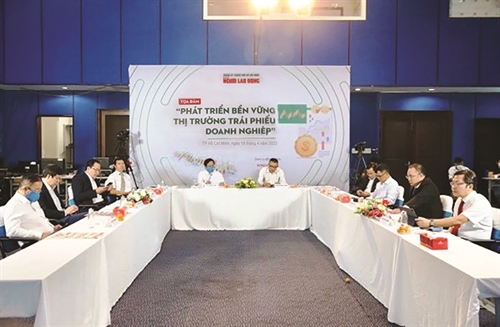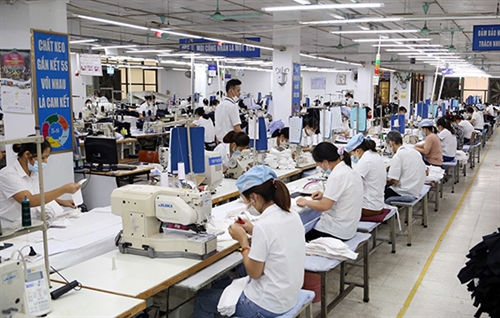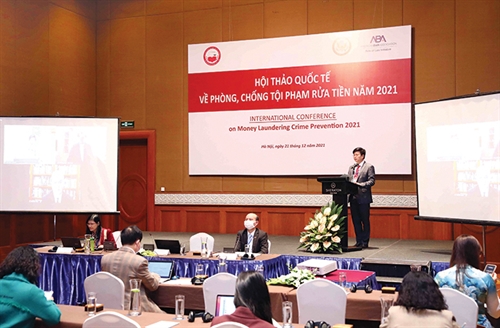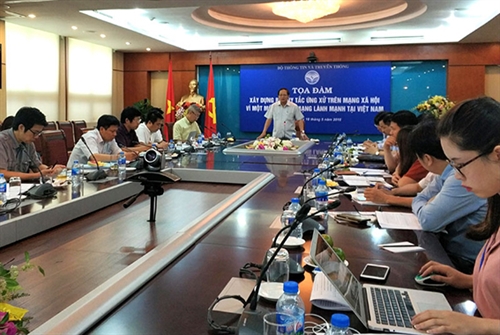On the early morning of April 8, nearly a hundred people queued outside the Social Security Agency of Ho Chi Minh City’s Thu Duc city, some of them even showed up from 4a.m. They were waiting for their turn to file requests for lump-sum withdrawal payment from the social insurance fund.
This sight has become familiar in not only Thu Duc city’s social security agency but also other social security agencies in Ho Chi Minh City since early this year.
According to statistics from the Vietnam Social Security, in the first four months of 2022, more than 302,000 people chose to exit the social insurance scheme and wish to receive back in a lump sum the social insurance premiums they and their employers have paid. In April alone, over 93,000 people left the social insurance scheme. Ho Chi Minh City had more than 37,000 people applying for the one-off payout, an increase of about 19 percent over the same period last year. In Thu Duc city, District 12, and Binh Tan, Hoc Mon and Binh Chanh districts, such withdrawals overloaded insurance agencies.
From 2016 to 2021, more than 4.59 million people opted for lump-sum withdrawal of social insurance benefits. On average, nearly 750,000 people leaved the social insurance system every year, accounting for over 5 percent of the total number of participants. For every two people who join the social insurance system, one is leaving early. In the first 10 months of 2021, more than 700,000 people registered for lump-sum withdrawal payment, 5.5 percent higher than the same period of 2020.
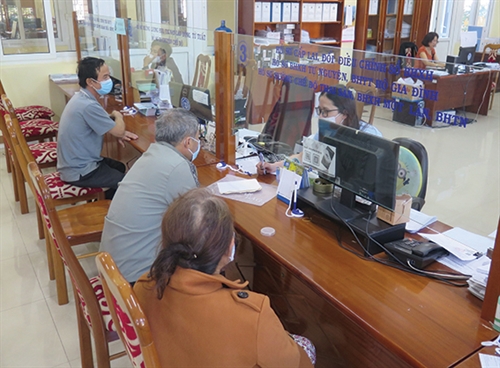 |
| Carrying out procedures for lump-sum withdrawal payment at Kon Tum province’s social security agency__Photo: Du Toan/VNA |
Why do workers leave the social insurance scheme?
Although leaving the social insurance system with one-off payout seems to be a risky action as withdrawers will be ineligible for health insurance-covered medical examination and treatment and have no pension when they become old, the trend shows no sign of stopping.
Explaining the reason behind the situation, former Deputy Chairman of the National Assembly’s Social Committee Bui Sy Loi said workers withdrew from the social insurance scheme mostly because of adverse impacts of the COVID-19 pandemic over the past three years. “The State has introduced many social security packages but can hardly solve all difficulties for workers, forcing them to ask for lump-sum withdrawal payment to meet their consumption needs,” the official told the online newspaper VnExpress.
The COVID-19 pandemic can be cited as the first and most direct cause of workers’ exit from the social security network. Statistics show that almost all applicants for one-off withdrawal of social insurance allowances are young workers with low incomes and no savings who will probably run into severe financial problems once they lose their jobs. When faced with the choice of having to take loans to cover their living costs or receive lump-sum withdrawal payment, workers often choose the second option.
Talking with VnExpress about the reason why she applies for one-off payment of social insurance allowances, Lanh, 27, one of the people queuing in front of Thu Duc city’s social security agency on April 8, said: “I had paid social insurance premiums six years in a row so now I would get VND 70 million (approximately USD 3,000). I need that money to take care of my son because my husband and I have earned almost nothing during the pandemic.”
Now let’s set aside the objective cause of COVID-19 pandemic, are there any subjective reasons that make people leave the social insurance scheme?
Thanh Truc, 45, a former human resource officer of a Ho Chi Minh City-based company, told Tuoi Tre (Youth) online that she decided to withdraw her social insurance allowances in a lump sum for investment in her own business. “While the retirement age has been raised, social security policies have not yet correspondingly been improved, even if I continue participating in social insurance, I will only be entitled to an unemployment benefit amount equaling at most 12 months’ salary,” Truc analyzed.
Unlike Truc who left her job at her own will, Sang, also 45, was fired by his company this April after more than 20 years of working. “Who will hire me at this age? I have to wait for another 12 years to receive monthly pension. So what will I live on? It is unreasonable that even though I have paid social insurance premiums for 20 years, when I lose my job, I’m not entitled to any benefits from the State, even a health insurance card for medical examination and treatment,” he wrote in a letter sent to the online newspaper Nguoi Lao Dong (the Laborer). In the case of Sang, even if he is aware of the importance of monthly pension, he would probably claim for one-off payout and use such money amount to earn a living.
Recommendations to keep workers stay with the social insurance system
Experts recommend several solutions to dealing with the situation, including: changing conditions for entitlement to monthly pension, adjusting unemployment and retirement allowance policies, and providing working parents with child benefits.
Loi, who was an expert on labor studies, suggested that the period of making contributions to the social insurance fund to enjoy pension should be reduced from 20 years to 15 years, or even 10 years, while retirement benefits should be re-designed to be enough to cover retirees’ basic needs.
In addition, conditions for one-off payout should be tightened. Under current regulations, workers may ask for lump-sum withdrawal payment one year after they stop working and making contributions to the social insurance fund. This time may be prolonged to two or three years but during that extra period, workers should be entitled to support policies, e.g., unemployment allowances, social security packages and soft loan packages, so that they can overcome initial difficulties after losing their jobs. “Only in this way, workers would not consider leaving the social insurance scheme,” the expert stressed.
Le Dinh Quang, Deputy Director of the Vietnam General Confederation of Labor’s Department of Policy and Law, agreed with the plan to reduce the required time of payment of social insurance premiums so as to avoid the situation in which workers, discouraged by the long period of waiting, opt for one-off withdrawal of social insurance allowances.
“It’s easy for workers to leave [the social insurance system] because they somewhat lack trust in the system,” Quang said, emphasizing that not a few social insurance policies are showing inadequacies.
According to the Trade Union official, instead of tightening the conditions for entitlement to pension, it is necessary to find ways to increase income for workers so that they can live on wages and have savings to cope with unexpected events, while facilitating their access to credit with preferential interest rate. “Once laborers are entitled to soft loans and employment support policies, they will never think of lump-sum withdrawal of social insurance allowances,” Quang affirmed.
Meanwhile, Andre Gama, a social welfare expert of the International Labor Organization (ILO) in Vietnam, pointed out that although the number of unemployment insurance participants has reached 13.5 million, a majority of laborers do not have any income protection once they lose their jobs. It is worthy to note that the characteristics of the Vietnamese labor market make it difficult for almost all laborers to attain 20 years of contribution to the social insurance fund so as to be eligible for monthly pension.
The wave of lump-sum withdrawal of social insurance allowances is particularly worrying as it concerns mostly female workers. In 2019, around 69 percent of withdrawers were women aged under 35. “Vietnam may consider providing child benefits to reduce financial pressure on workers, especially women who are raising young children,” the ILO expert was quoted by VnExpress as saying.
According to an ILO study, on average, the per-capita income of a working family is reduced by about 8.2 percent due to payment of social insurance premiums. “A multi-tiered child benefit mechanism, if available, would help considerably lighten this burden,” Gama said, adding that the first tier of the mechanism would cover those who cannot afford to pay social insurance premiums while the second tier, with higher benefit levels, would be reserved for social insurance participants.-
